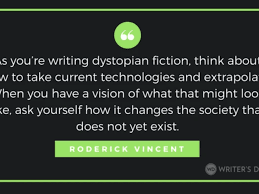Tag Archives: Flashback
Writing a Dystopian Story – 2022 Best

Writing a Dystopian Story.
Writing a Dystopian Story
Story must include all of the following:- Story must include a clear protagonist and a clear antagonist (the antagonist may be society or a way of thinking).- Clear characterization (your character(s) have distinct personalities)Dialogue between at least two characters (a conversation)- Story must use desсrіptive language to create imagery. (use the 5 senses: sight, taste, smell, sound, and touch)- Story must contain all the aspects of your plot diagram and use the elements of a plot: Exposition, Rising Action, Climax, Falling Action, and Resolution.- Story MAY NOT allow the protagonist to die as an ending.
Writing a Dystopian Story
Story MAY NOT be all just a love story or have it all just be a dream by the end. It should actually explore a real-world issue.Introduction/Setting:- Use a narrative device to grab the reader’s attention: Flashback, flash-forward, zoom in (start with a broad setting desсrіption and move toward the main character), or a startling dialogue line.- Introduce the main character in such a way that makes them seem like a person. – – Be detailed, with a lot of desсrіption.- Begin to describe its peculiarities and bizarre rules that it may have. Problem/Rising Action (Plot):- What problem is introduced that faces your main character – that she or he must overcome?
Writing a Dystopian Story
Is the problem created by an antagonist (villain)? Be sure to build an interesting and believable problem (and antagonist, if you have one)!- What events will occur as a result of the problem and your main character’s quest to overcome the problem? How does the dystopia get in the way of your character solving the problem? Climax:- This is the turning point in your story. It is the moment where everything changes for your character; they realize what they need to know; they now have a new perspective. Falling Action and Conclusion:- Should include the most intense moment in your story–the final showdown.
Writing a Dystopian Story
This is also the “happily ever after” part of your story – or at least the “ever after” part. Character’s problem is being solved now that the antagonist has been dealt with.- How will you wrap up your story in a satisfying way that leaves no loose ends?Design Your Dystopia:- DEFINING THE PROBLEM: Brainstorm some problems in our society. What are political or cultural issues that people debate?NARROWING YOUR FOCUS: What problem do you want to focus on?- THE INTENDED UTOPIA: How could a society try to fix that problem? Consider what government, laws, and cultural practices people would develop as a solution.
Writing a Dystopian Story
THE ACTUAL DYSTOPIA: What would be some inherent problems in that perfected society? In fixing that one problem, what new problems would arise?- BACKSTORY BEFORE: Where is your Dystopia? Was it originally a city? A state? A country? Which one? Choose a real-world place.- THE EVENT: What happened to cause such a shift from the original situation to your dystopia? Was there a political shift? A war? A natural disaster? Something else? Setting:- When does your story take place? Consider the year, the season, the timeline (hint: shorter timelines are easier to fit in short stories than longer ones).
Writing a Dystopian Story
Must include: Sights – Ex: colors, objects, plants, architecture, clothing Smells – Ex: odors, perfumes, from plants, food, smoke, sewage, etc.Tastes – Ex: foods, drinks Touch – Ex: temperature, materials used in clothing/building/ infrastructure, weather and climate (wet, dry, humid)Sounds – Ex: language, animals, vehicles, weather Characters: Must have a Protagonist and an Antagonist also with at least 3 other charactersYour Outline: Exposition- In the exposition, we get to know who the main character is and what their ordinary world is like. Their normal world might be very different from our world, but it is average for them.
Writing a Dystopian Story
Inciting Incident- Something happens to jolt the character out of their ordinary world. The conflict is introduced Rising Action- Now in a new situation, the character reacts to what is happening around them. Things get more and more challenging. The character probably fails during this stage of the story. Multiple things should happen at this part of the story. Climax- Something changes for the character. Maybe they learn something important for their success, or they decide they’re fully in on addressing the conflict. The character moves from reaction into action. Falling Action- Having now grown/changed, the main character has their final confrontation with the conflict. https://youtu.be/zKannI3WNzc






